The War of the Worlds
Bryon Haskin’s version The War of the Worlds is a loose adaptation of the H.G. Wells novel of the same name. It is an ambitious addition to the George Pal produced special effects extravaganzas of the fifties and ranks as his very best production. Released by Paramount Pictures in 1953, The War of the Worlds is a visual delight, filmed in glowing Technicolor.
Earth is unexpectedly invaded by Martians. The scientists, especially American scientist Dr. Clayton Forrester (Gene Barry), search for any weaknesses that the Martians may have in the hope of halting the attack. The United State Marine Corps surround the crash sites. A pastor tries to communicate with the Martians, but the visitors show no mercy and kill him.

Using powerful “heat-ray” and “skeleton beam” weapons, the military is easily destroyed by the Martian war machine. Reports soon emerge that major cities are being destroyed by the alien visitors. How can they be stopped?
The War of the Worlds is regarded as a classic of the genre. It is entertaining but it is the Academy Award winning special effects that sets this film apart from the others. The visuals are still outstanding, especially the sight of visiting crafts. Their appearance looks like sophisticated and sinister floating mantras rather than the standard flying saucer.
The sound effects are also outstanding such as the use of high-pitched shrieks when the heat ray is used and the distinctive green ray (or a skeleton beam) sound.
Lead stars Gene Barry and Ann Robinson are persuasive as Dr. Clayton Forrester and Sylvia van Buren. The dialogue may be cheesy at times and some of the scenes may not be as dramatic as they should be, but the visually stunning The War of the Worlds is a major science fiction movie of the era and is always worth watching.
Them!
Them! is often regarded as the first “big bug” movie. It is certainly one of the first “nuclear monster” movies.
Written by Ted Sherdeman and Russell Hughes (based on a treatment by George Worthing Yates) and directed by Gordon Douglas, Them! was released by Warner Bros in June 1954.
The film begins in the New Mexico desert where a young girl wanders whilst in a state of shock. New Mexico State Police Sergeant Ben Peterson (James Whitmore) and Trooper Ed Blackburn (Chris Drake) bring the little girl to a nearby abandoned trailer.
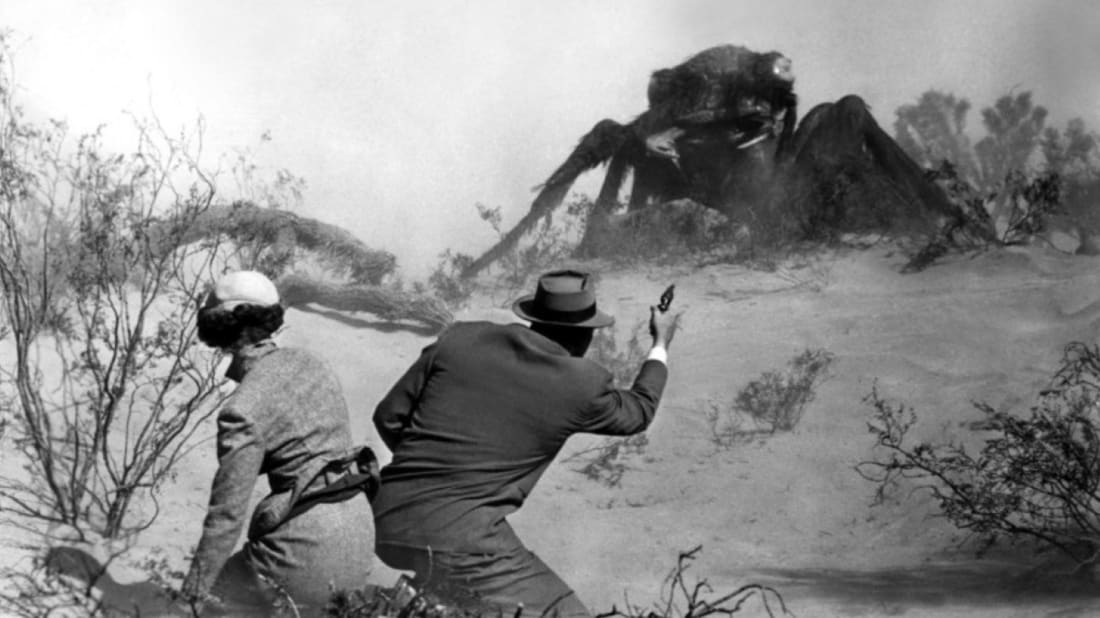
The trailer has a lot of structural damage but no evidence of any explosion. Patterson finds clothes and plastic, whilst Blackburn finds some sugar cubes. It is soon discovered that the trailer belonged to an FBI agent and his family.
After stopping off a general store, Peterson and Blackburn find the owner’s dead body lying in the storage area. A part of the wall has been pulled apart.
They also find a twisted gun, used by the owner to fight off the attackers and an overturned barrel of sugar. Peterson decides needs to exit the store, leaving Blackburn to secure the area until the investigation team arrives. After hearing loud cricket noises, Blackburn soon finds out that he has visitors.
Them! was intended to be a 3-D Technicolor feature, but plans were changed following three-dimensional technology malfunctions. There are still parts to the original concept featured in the final print, such as the opening title (Them!) in red and blue on a black and white background; and a flamethrower aiming at the screen.
The sharp direction, inventive writing and the moody cinematography (from Sidney Hickox) are straight from the top drawer. The special effects may be a tad overpraised, but the giant ants are seldom seen anyway.
Still very suspenseful and exciting, Them! truly deserves the high praise it has received from audiences and critics throughout the years. A genuine science fiction classic.
Forbidden Planet
One of the most visual impressive science films of the decade is Forbidden Planet. Shot in CinemaScope and Eastmancolor, it was released by Metro Goldwyn Mayer in 1956.
Loosely based on William Shakespeare’s play The Tempest, Forbidden Planet begins with the US planet cruise C-57D contacting a marooned scientist Dr. Morbius (Walter Pidgeon), who warns them to stay away. Commander John Adams (Leslie Nielsen) decides that they should land on the planet anyway.
They meet Dr. Morbius and his mini-skirted teenage daughter Alta (Anne Francis). Alta has never seen a young man before and members of the all-male crew are more than excited to meet her.
However, Adams questions Morbius on what happened to the rest of the original expedition from 19 years before, but he will soon find out what really happened to them.

Forbidden Planet is a ground-breaking picture. It is the first to have a fully operational human-built spaceship that travelled faster than the speed of light, a decade before the arrival of Star Trek. The film is also the first to be set entirely on another planet. It is also the first film to use a robot as a fully rounded character with a personality.
It is also the first film of any kind to contain a complete electronic score, created by electronic music pioneers Bebe and Louis Barron.
Filmed entirely indoors, Forbidden Planet looks absolutely stunning with impressive sets, the Academy Award nominated special effects and beautiful matte paintings.
The animated sequences, especially the attack of the Id monster, were created by Walt Disney animator Joshua Meador.
Despite being set in the future, Forbidden Planet is very much entrenched with 1950s values, with an all-white, all-male ship. The high camp dialogue and the presence of the very youthful Leslie Nielsen (many years before his deadpan comedy performances) do not affect the entertainment and cleverly constructed moments of excitement.
Unlike many science fiction films of the fifties, Forbidden Planet was an expensive film to produce, but the result paid off. Forbidden Planet is one of the most visually impressive science fiction films of the era and a must see for anybody remotely interested in the genre.
Invasion of the Body Snatchers
Even though Invasion of the Body Snatchers was made and released by a B-movie production company, it is often regarded as a major feature. Released in 1956, the film was produced by Walter Wanger for Allied Artist Pictures, directed by Don Siegel and stars Kevin McCarthy, Dana Wynter, Carolyn Jones and King Donovan.
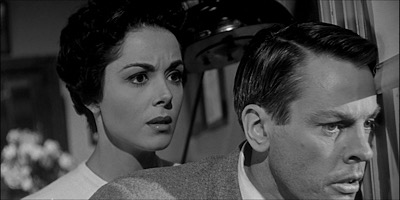
The film begins with a hysterical man held in an emergency hospital in California, who tells the psychiatrist that he is a doctor too. He recalls what has happened after he returned home from the convention:
“At first glance, everything looked the same. It wasn’t. Something evil had taken possession of the town”.
The doctor had lots of appointments from patients who were convinced that their relatives had somehow been replaced by imposters. Miles soon meets up his former girlfriend, Becky Driscoll, who had returned to her home following her divorce. Becky soon tells Miles that her cousin Wilma believes that her Uncle Ira is not her Uncle Ira.
Psychiatrist Dr. Dan Kauffman assures Miles this is nothing more than “an epidemic of mass hysteria”.
But that same evening, a body is found on the pool table in the house of Dr. Kauffman’s friend Jack. The body has no features, except that it has facial features identical to Jack. Dr. Kauffman is summoned to the house, but the body has mysteriously disappeared.
Following other finds, Miles and Becky soon realise what that “something evil” is. Giant alien pods are replacing humans and that an invasion had already taken place. But what can Miles and Becky do?
Invasion of the Body Snatchers is a splendid science fiction film which is as much a cautionary tale about blacklisting as about an alien invasion. The screenplay by Daniel Mainwaring, adapted from the novel The Body Snatchers by Jack Finney, is impressive and Don Siegel’s direction is inventive from start to finish.
The “small town” setting is given an effective film noir look by cinematographer Ellsworth Fredericks. The cast members also produce career defining performances (watch out for future legendary director Sam Peckinpah as Charlie).
There has been several remakes and inspirations, but the original Invasion of the Body Snatchers is easily the best. Despite being mostly ignored on its original release, Invasion of the Body Snatchers has since received universal acclaim and is regarded as one of the greatest science fiction movies ever made.
The Incredible Shrinking Man
Released by Universal-International Pictures in 1957, The Incredible Shrinking Man was directed by Jack Arnold and stars Grant Williams and Randy Stuart.
Whilst on a boating holiday, Scott Carey (Grant Williams) is exposed to a strange fog. A few months later, Scott realizes that he is shrinking and by the time he is size of a child, the general public becomes interested.
Scott is referred to the California Medical Institute where a team of doctors soon declare that the strange fog, combined with exposure to pesticide, has rearranged his molecular structure which causes his cells to shrink. The doctors manage to halt the process, but Scott soon learns that he is shrinking again.
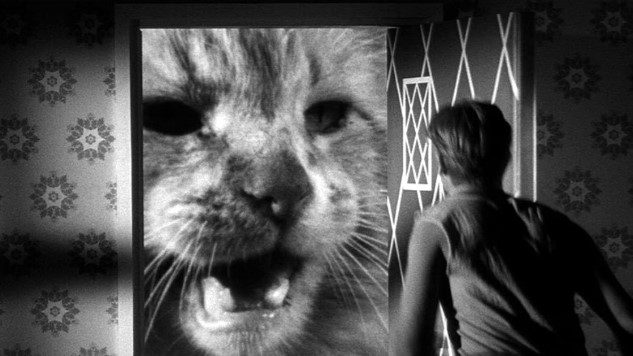
By the time he is small enough to fit into a doll’s house, Scott considers suicide but keeps putting it off in the hope that a cure is found. However, Louise (Randy Stuart) accidently lets in their house cat just as she heads off on a quick errand. The cat attacks Scott, who falls into the basement of their home.
When she returns, Louise is distraught as she looks at the bloodied piece of tiny clothing because she is convinced that the cat has devoured Scott.
Believing that she is now a widow, Louise moves out of the house, whilst a terrifying adventure in the basement awaits the continually shrinking Scott Carey.
The Incredible Shrinking Man encapsulates the paranoia of the era but does so with immense style and intelligence. Jack Arnold’s direction is the best of his career and Richard Matheson and Richard Alan Simmons’ screenplay is intelligent, philosophical and sometimes moving.
Despite the limited budget, the special effects are great for its day and film has lost none of its power. Some of the sequences are still immensely exciting and frightening.
The cast is excellent, especially Grant Williams, who should have been a much bigger star.
The Incredible Shrinking Man is an impressive science fiction film and is a fine example of what Hollywood can do when it really wanted to.
Other films
In 1954, Walt Disney Pictures released the hugely enjoyable 20,000 Leagues Under the Sea (based on the Jules Verne novel) and is best remembered for the fight with the giant squid.
The Golden Age of Science Fiction Movies had simmered off by 1957. A few low budget B-movies were released, such as Attack of the Crab Monsters, Invasion of the Saucer Men, The Black Scorpion and The Giant Claw. These films are held with affection by many enthusiasts of the period, but they are not loved by the critics.
A few decent science fiction films were released during the end of the decade. Well regarded pictures such as Not of This Earth (1957), I Married a Monster from Outer Space (1958), Journey to the Center of the Earth (1959), On the Beach (1959) and The Time Machine (1960) did not halt the declining interest in the craze for the genre.
Outside the system
Japan joined the science fiction film craze in style with the release of Gojira (commonly known as Godzilla) in 1954. Following nuclear testing, a giant prehistoric sea monster arises from the deep and creates havoc on the land. Superbly directed by Akira Kurosawa collaborator Ishirō Honda, Gojira is an engaging monster movie, although the monster is played by an actor wearing a latex suit. Avoid the heavily edited American version entitled Godzilla, King of the Monsters.
Before making a name for gothic horrors, Britain’s Hammer Studios released The Quatermass Xperiment (US title: The Creeping Unknown) in 1955. Based on Nigel Kneale’s influential BBC live television presentation, The Quatermass Xperiment is about a crashed rocket ship with a missing crew and a horrific secret. Both this and the 1957 sequel Quatermass II (US title: Enemy from Space) are atmospheric and tense science horror films.
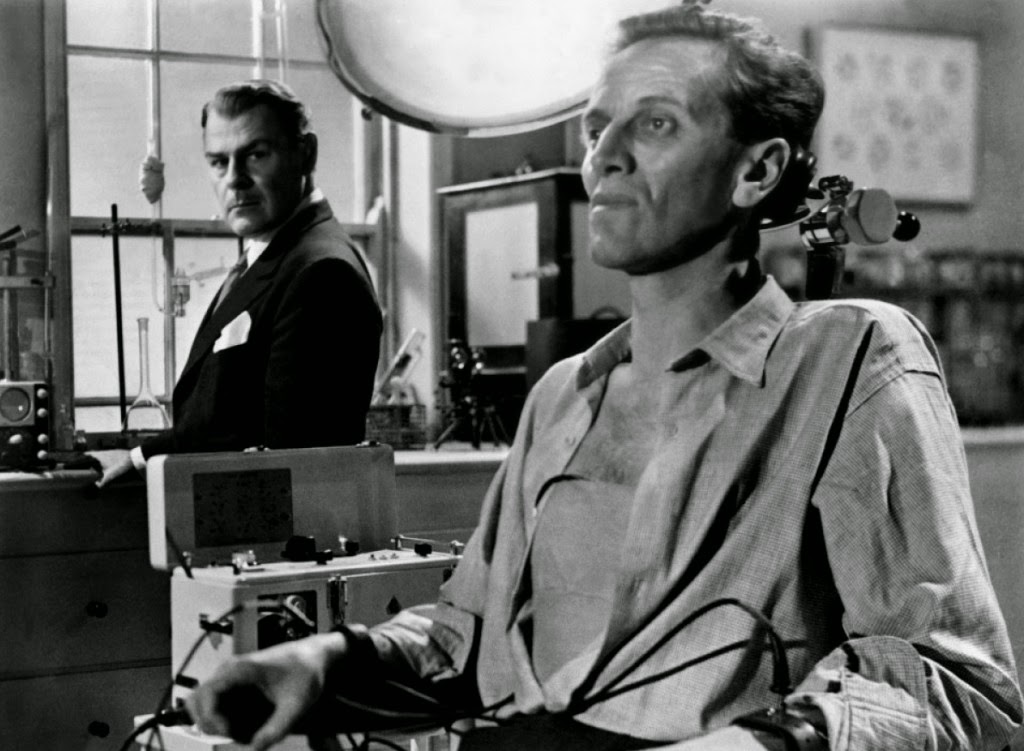
A piece of trivia: The tragic Victor Caroon in The Quatermass Xperiment was played by Richard Wordsworth, who was the great-great-grandson of English poet William Wordsworth.
Legacy
However, exceptional science fiction films have been made since the golden era. Classics such as Planet of the Apes (1968), 2001: A Space Odyssey (1968), Westworld (1973), Alien (1979), Blade Runner (1982), The Terminator ((1984), and Robocop (1987), as well as the enduring Star Trek television series, means that there has always been a huge appetite for sci-fi.
A few films from the Golden Age of Science Fiction movies has inspired many modern writers and filmmakers including John Carpenter, Tim Burton and Christopher Nolan. It is as though a baton has been passed from era to another.
So, keep watching these 1950s science fiction classics. They are simply too important to be forgotten and too enjoyable to be ignored.
Paul J. Bradley
Classic Movie Recall Podcast: The War of the Worlds (1953)
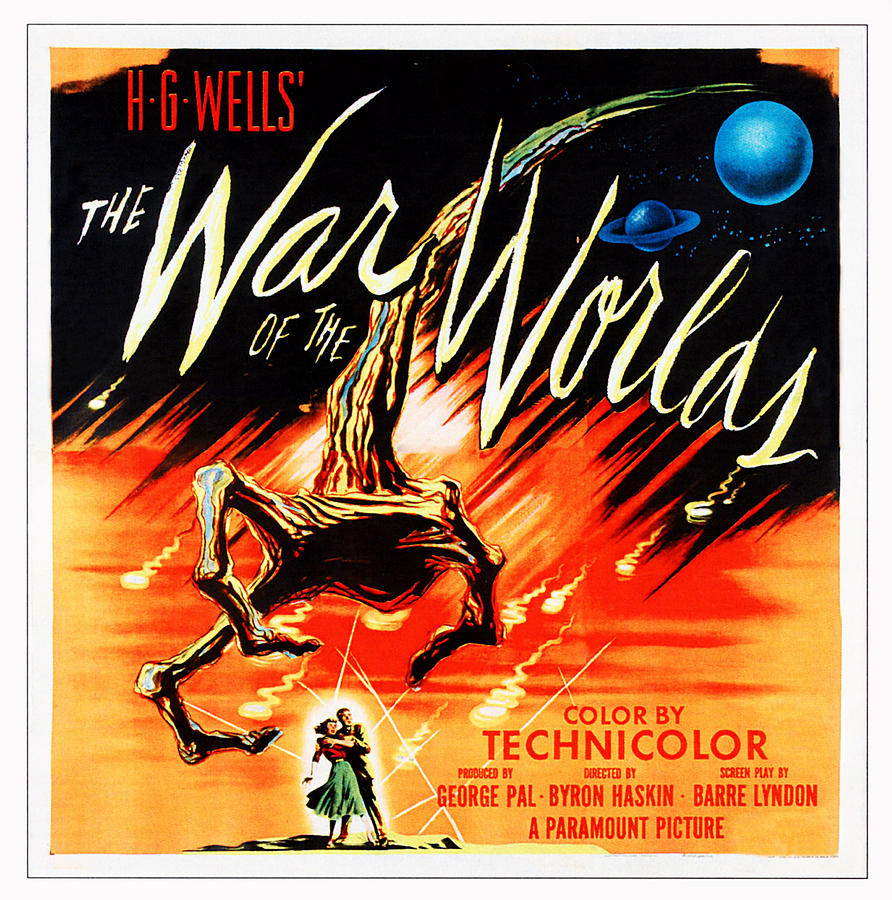
Please also listen to the informative Classic Movie Recall podcast on The War of the Worlds (1953) from accomplished broadcaster Lara Scott, Oscar-winning documentary maker James Moll and widely respected producer/writer Melanie Hooks.
In the podcast, Classic Movie Recall welcomes two guests: Craig Barron, an Oscar-winning visual effects artist; and Andrea Kalas, the head of the Paramount Studios Archive who oversaw the restoration and preservation of the film.
Please also check out the exclusive photos from the Paramount Studios archive. The articles and the podcast are also available on the Classic Movie Recall website.

Be sure to visit our blog for even more thoughts about these great vintage movies and their writers, directors, producers, cinematographers, composers, actors and everyone who brought these classics to the screen.
http://classicmovierecall.com/